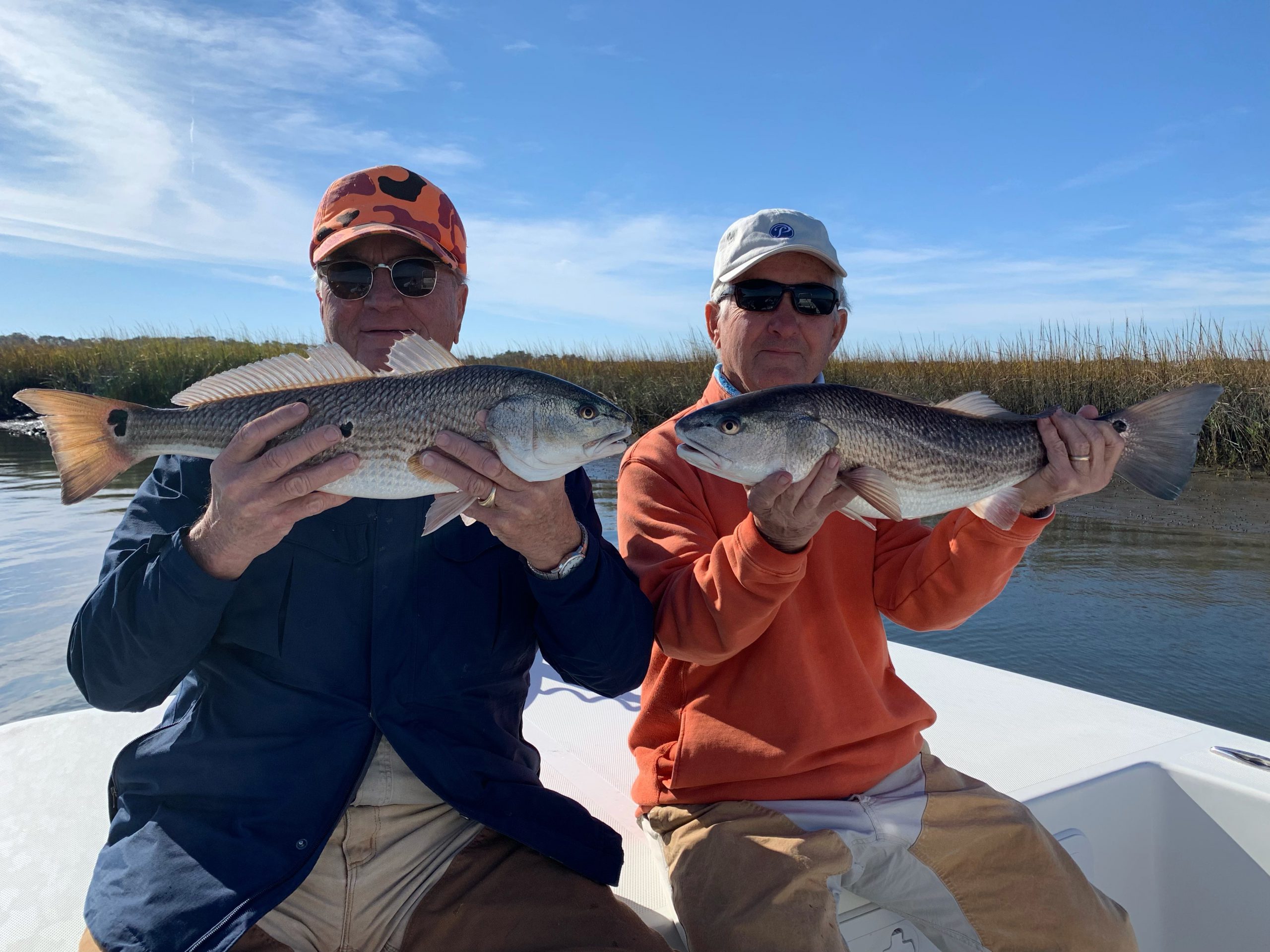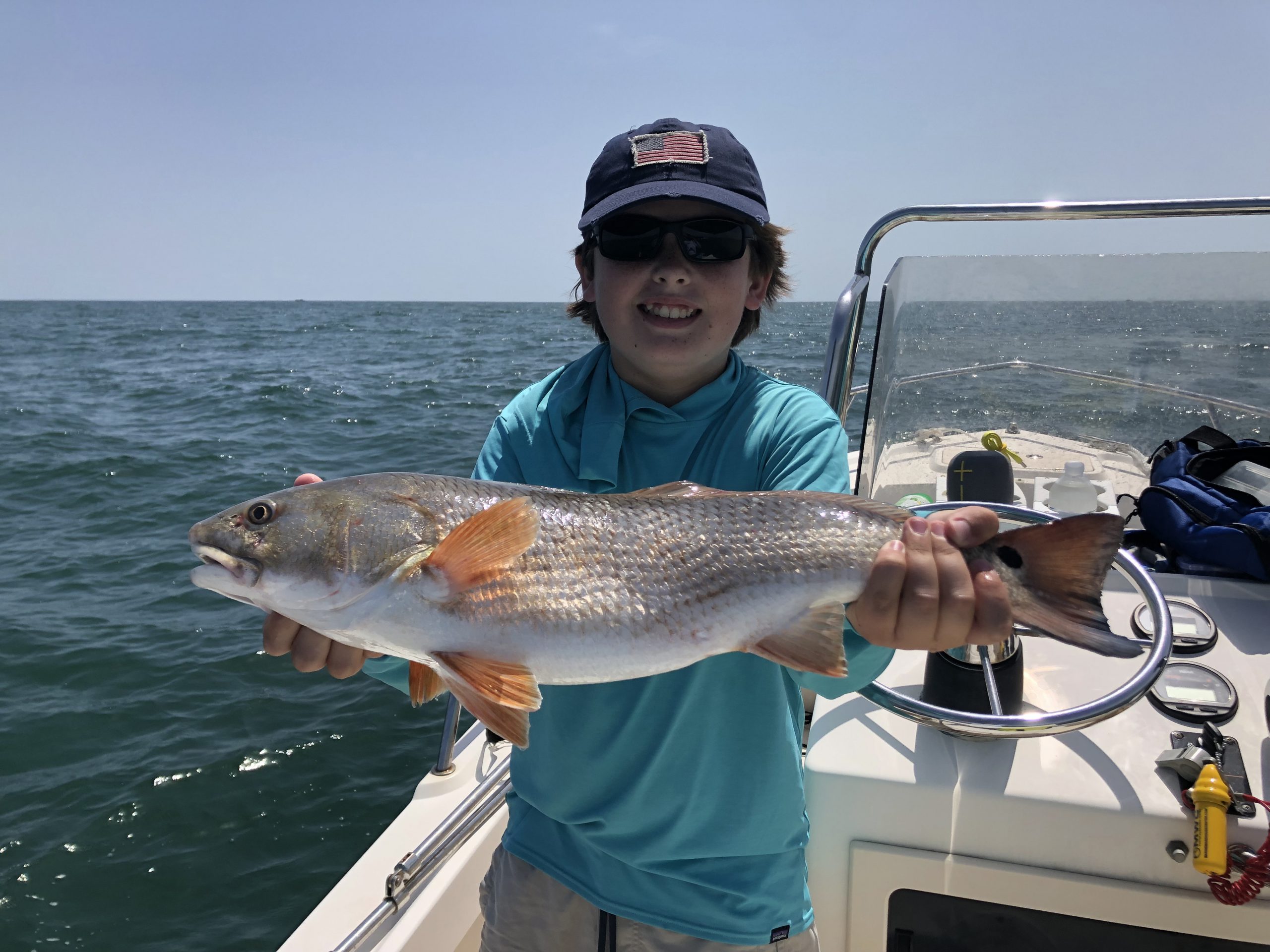Carolina Beach – April 2022
Andrew, of Island Tackle and Hardware, reports that bottom fishing in the surf with fresh shrimp or Fish Bites bait strips has been producing sea mullet, pufferfish, and scattered rays. Sand fleas also have had a lot of success, though finding them this early in the year can be extremely difficult.
Anglers down in Kure Beach have found some black drum mixed in the bottom action.
Bluefish are just starting to show up, with numbers only getting better from this point forward.
Inshore anglers are landing a mix of smaller sheepshead, black drum, and redfish staged up around inshore structure. Live shrimp works great for all three species, with the red drum also hitting mud minnows and Gulp or Z-Man soft plastics.
There are a few Atlantic bonito showing up in the 5-7 mile range, and they could really start pushing into the area in good numbers any day. Casting metal jigs and spoons at the surface-feeding action is the best way to get strikes.
King mackerel are still way out in 23+ mile range.

David Parker (of Raleigh) and John Gramling caught these redfish on dead shrimp in the lower Cape Fear River. They were fishing with Capt. Christian Wolfe of Seahawk Inshore Fishing Charters.
Christian, of Seahawk Inshore Fishing Charters, reports that anglers are catching a good mixed bag of red and black drum. April tends to be more geared to success when targeting black drum. Recently it has been a good-sized class of 14-18” fish, with some even bigger ones in the mix. Targeting shell beds and drop-offs with fresh dead shrimp has produced most of the strikes, and timing efforts around a moving tide pattern has also helped.
Most of these early red drum are just under-slot, with the 16-18” range being most common. These reds are best caught using the same tactics as black drum fishing.
Tommy, of Mungo Fishing Charters, reports that anglers have been having a blast targeting red drum back up on the marsh flats and inshore grass edges with soft plastics. Getting out on calmer days and scouting for these schools pushing wake in the shallows makes for and exciting bite. When the winds are up, it has been best to fish natural baits—shrimp, mud minnows, and (soon) pogies—on bottom rigs to locate the schools.
Black drum fishing has been good all winter around inshore hard structures. Using the freshest available shrimp on Carolina rigs has been best when fishing the deeper oyster bars and jetties.
Speckled trout are becoming more active as we move into spring. Anglers will find success targeting these trout in deeper waters (5-9’ range) that have some current or water movement. Nearby structure is also important, so look for areas of oysters or shoreline points to congregate the schools. A variety of soft plastics, topwater plugs, and hard sinking or slow-suspending lures will all get strikes.

Rob Wells (age 10), of Wilmington, caught this redfish on a live finger mullet in Masonboro Inlet.
Mason, of Grand Slam Fishing Charters, reports that red drum are starting to move out of their winter holes and are getting more active with warmer water temperatures. These reds will still be grouped up, but they’re typically in much smaller numbers than the large winter schools. Target these fish around oyster rocks, docks, and other hard structures. The reds will eat a variety of natural baits, from mud minnows and pogies to fresh shrimp. Artificials also do well, with anglers getting strikes using Z-Man or Gulp soft plastics.
Black drum will be staged up around these same structures throughout the waterways. This time of year, they tend to be schooled up, so find one and there are very likely more around. Anglers should have a lot of success fishing Carolina-rigged fresh shrimp or crabs with 1/2-1 oz. weights.
Flounder are starting to move into the inlets and areas of nearby structure.
Sheepshead will also begin to show up inshore over the next few weeks. Live fiddler or mud crabs on sweeper jigs or Carolina rigs work great for these fish.
Rod, of OnMyWay Fishing Charters, reports that nearshore water temperatures creeping into the 60-degree range have anglers anticipating the arrival of Atlantic bonito any day now.
Nearshore reefs in the 10-20 nautical mile range have been kicking out some excellent black sea bass action.
Reefs and other hard structure in the deeper spectrum of this range have also included nice-sized vermilion snapper, triggerfish, grunts, and pink snapper.
King mackerel are holding the 70-degree edge out in the 38-45 nautical mile range. This water should move into the 23-30 mile range sometime around the end of April.
Anglers trolling out at the break are catching wahoo and a few blackfin tuna, and there has been some nice African pompano caught while jigging out in the 240+’ range.
